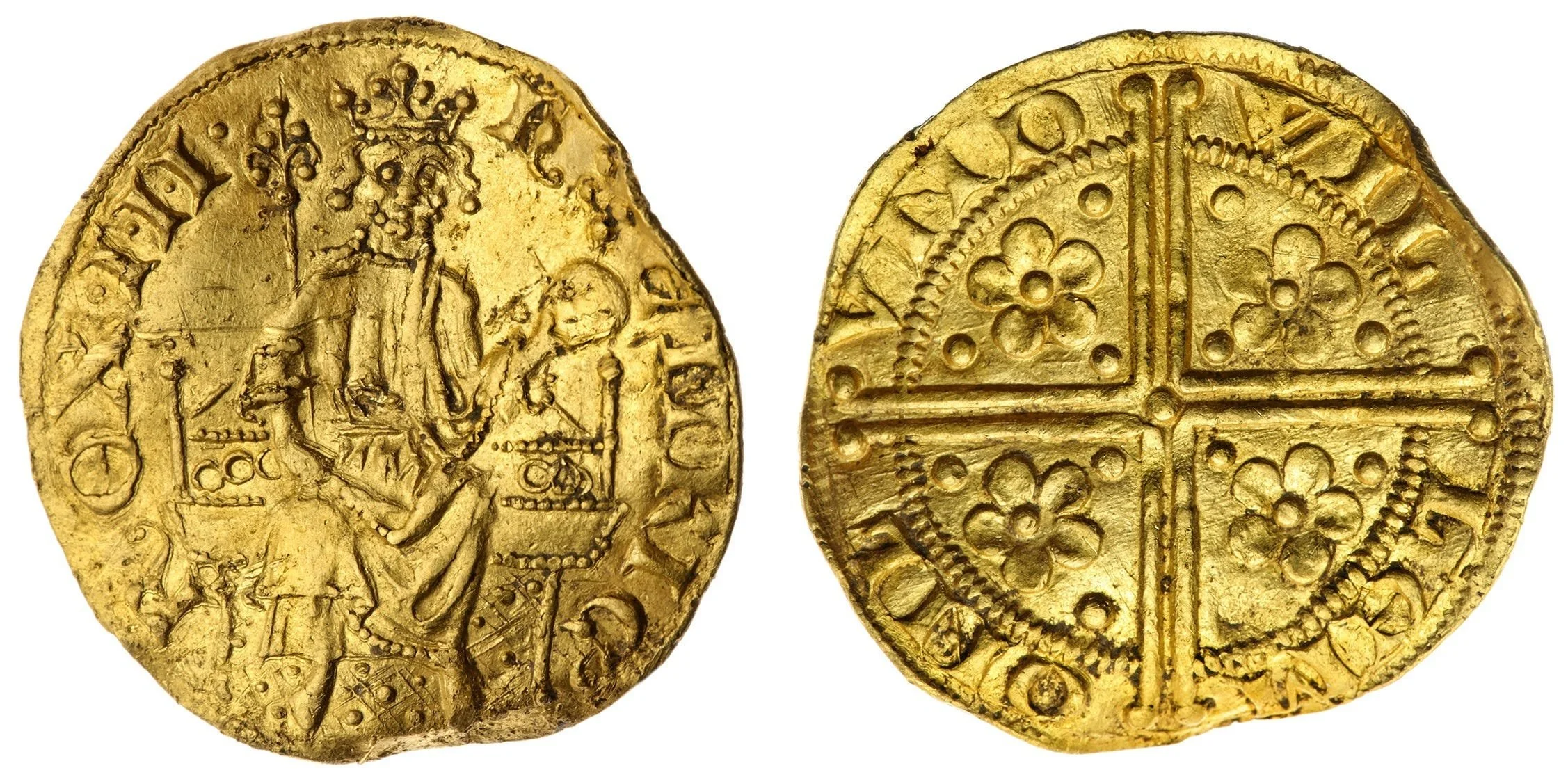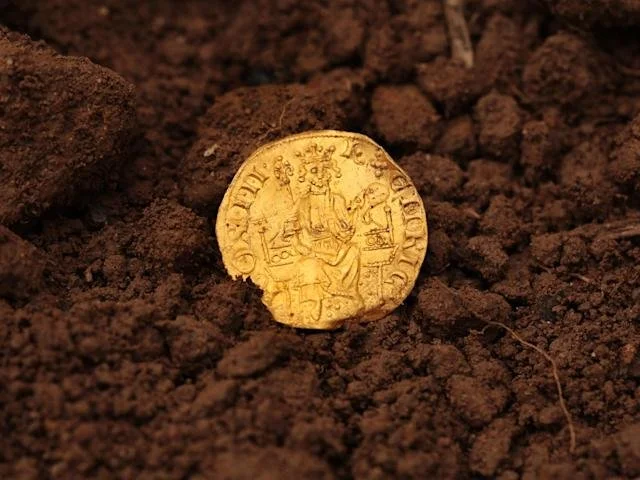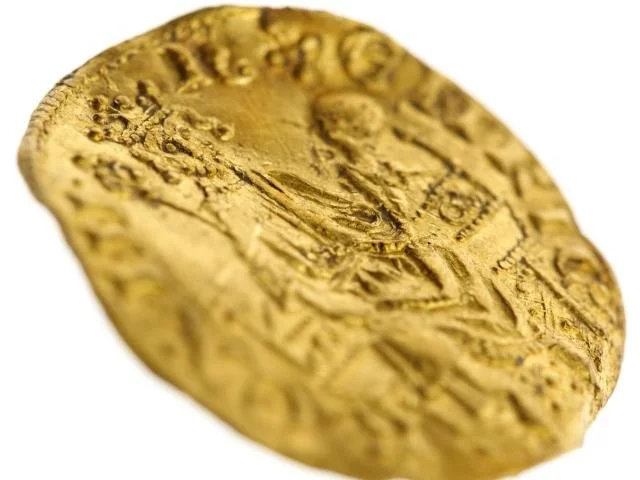In the following video we will be making medieval mead (also called hydromel), same way as the Vikings did. Enjoy!
Is there any truth to the King Arthur legends?
King Arthur has risen again and again in our collective imagination, along with his retinue of knights, Guinevere, the Round Table, Camelot, and of course Excalibur. But where do these stories come from, and is there any truth to them? Alan Lupack traces the evolution of King Arthur.
The Ancient History and Spiritual Depth of Yoga
The history of yoga is a rich tapestry of ancient wisdom, tracing back to the insightful techniques for inner peace documented in the Yoga Sutras of Patanjali by ancient Indian sages. Patanjali's contributions to yoga were profound, laying down the fundamental principles and practices that have guided practitioners for centuries. His work emphasized that yoga is not just a physical exercise but an existential, experimental, and experiential journey towards self-realization.
The origins of yoga can be traced to the sage Kapila and the ancient Indus Valley civilization, where the concept of Prakriti as the powerful and fundamental entity of the universe took root. Additionally, the origins of Tantra, a mystical tradition, may have emerged from matriarchal societies and left a lasting influence on the evolution of yoga.
Yoga's roots delve deep into history, with evidence of yogic practices found in the ancient Harappa civilization and the Vedic scriptures such as the Rigveda. The seers of the Rigveda were deeply attuned to Prakriti, shaping the early understanding of yoga as a profound spiritual practice.
The influence of other spiritual traditions, such as Buddhism, also played a significant role in shaping yoga. Buddha's spiritual journey and the founding doctrine of dharma, promoting the act of seeing and realizing instead of blind belief, became intertwined with the evolution of yoga. Even though Patanjali's Yoga Sutras were agnostic to all religions, Jainism and Buddhism had an influence on them, illustrating the varied spiritual landscape of ancient India.
Throughout its history, yoga has influenced Indian culture, embracing the pursuit of knowledge and the unification of the soul with the divine. The concept of Hatha yoga, focusing on physical purification and the awakening of subtle energy within the body, has deeply influenced the Bhakti movement, emphasizing devotion and expressing love for the divine.
The ancient practices of yoga have transcended time, leaving a profound imprint on Indian society. From the influence of Lord Shiva, depicted in yogic art as the embodiment of creation, existence, and destruction, to the fundamental concepts of Kundalini and Prana, which represent the flow of energy within the body, yoga has woven itself into the very fabric of Indian spirituality.
In the modern era, the legacy of yoga lives on through spiritual luminaries such as Ramakrishna Paramahansa, whose spiritual wonder and influence continue to inspire spiritual seekers around the world. The ancient and multifaceted history of yoga serves as a timeless testament to the enduring quest for inner transformation and self-realization.
Colonization of Africa - Summary on a Map
Let's look at a map and see a summary of the different phases of exploration, conquests and colonization of African territories by European powers, beginning from the mid-15th century. Enjoy!
Top 15 Biggest Asteroid Impacts in History
The meteor that wiped out the dinosaurs, wasn't the only large scale impact in history. Today we'll take a look at some of the biggest asteroid impacts in Earth history. Watch the video to find out more!
9 Places You Should Never Swim (Never Ever!)
How to Stay Safe While Traveling. No matter how well you can swim or dive, there are places you should definitely avoid and never visit while traveling to stay safe. Some have treacherous underwater rocks, flows, and tides, while others have gained notoriety for the legends of monsters and mysterious creatures dwelling in their depths. In this video, you'll learn all about the most dangerous and terrifying bodies of water you should never ever go swimming in.
Lands That Could Flood in Our Lifetime
Some places are more threatened by rising sea levels than others, but in the end we'll all be paying a price. Alternate titles include: "Where You Shouldn't Invest in Real Estate," "Places You Should Vacation to Before They're Gone," and "Oh Man We're In A Lot Of Trouble On This One Aren't We?" Watch the video below to find out more!
The Mummification Process (short animation)
The ancient Egyptians developed a sophisticated method to preserve a dead body for the afterlife: mummification. First, the internal organs were removed and all moisture from the body was eliminated. Next, the body was wrapped with long strips of linen, and then covered with a large linen cloth. Follow the steps of the mummification process in this short animation about the Getty Museum's Romano-Egyptian mummy Herakleides.
Artefact From Space Discovered Inside A Tomb
King Tut's tomb had numerous ancient artefacts inside of it, two of them came from out of space. Architects found that the dagger and Tutankhamun's breastplate inside King Tut's tomb to be remnants of an asteroid that hit Ancient Egypt. Check out Egypt's Unexplained Files to see how Egyptian pharaohs were mummified and preserved for thousands of years.
Most Mysterious Things Found Underground
In the following video we will be exploring the most mysterious things that have been found underground. Watch the video to find out more!
What Was the Earth Like When Dinosaurs Were Around?
Approximately 252 mln years ago the Earth’s biosphere suffered from a tremendous blow. Almost 96% of marine fauna, around 70% of land vertebrates and roughly 83% of insects perished within a period really short by geological standards. The causes of this disaster are still obscure, but whatever it was, the dreadful calamity didn’t wipe life off the face of the Earth – quite on the contrary, it proved to be a milestone that marked the beginning of a new era. This is when there emerged the most well-known prehistoric creatures – dinosaurs.
12 Most Mysterious Ancient Technologies Scientists Still Can't Explain
Technology evolves and progresses as time goes on. In the mid-1990s, the internet was a new idea to most people and could only be accessed by putting cables into your computer, but now you can access it wirelessly using devices you hold in the palm of your hand. In fact, technology evolves so quickly that we sometimes lose track of how it used to work or even what it used to do. The things you're about to see in this video serve as proof of that!
The Siege of Jerusalem (70 AD) - The Great Jewish Revolt
The entire documentary on the Roman Siege of Jerusalem in 70 AD. This massive battle is one of the most stunning of all antiquity. On display were impressive siege works and feats of bravery on both the Roman and Jewish sides as they fought mercilessly over every inch of Jerusalem. Fighting would even make its way up the the inner sanctums of the Temple Mount and witness the destruction of the Second Temple.
The gold-filled tomb of the “Exiled King” makes everyone overwhelmed
Liu He was an emperor of the Chinese Han dynasty with the era name Yuanping. He was originally the ruler of Changyi, later installed by the minister Huo Guang as emperor in 74BC.
Twenty-seven days later, he was deposed and omitted from the official list of emperors, with a total of 1127 examples of misconduct used as evidence in articles of impeachment by palace officials.
Liu He was banished to live in exile as a commoner, where he later died in his early thirties in 59 BC, survived by his 16 wives and 22 children.
He was buried in the tomb of the Marquis of Haihun, located in the northern part of Xinjian in Jiangxi. Archaeologists uncovered the tomb in 2011, with ongoing excavations discovering around 20,000 artefacts.
His tomb is one of the best-preserved from the Western Han Dynasty (206 BC-24 AD) ever found, with the most integrated structure, distinct layout and complete sacrificial system. The tomb has yielded the largest number of relics, boasting the most variety and the finest craftsmanship in Jiangxi.
Among the relics, including gold, bronze, and jade artefacts, archaeologists discovered a broken lacquer “screen” in the main chamber of the tomb and restored two portraits, one of which is believed to be the earliest portrait of Confucius ever found in China.
Also unearthed were over 5,000 pieces of bamboo slips of Confucian classics, indicating the prevalence of Confucius’ teachings over 2,000 years ago.
The Qi version of The Analects of Confucius, which had been lost for about 1,800 years, was found in the unearthed bamboo slips which have been subject to infrared scanning and are ready for further study.
Such vicissitudes might have deprived his life of imperial glory, but the relics unearthed from his tomb tell a different story, revealing a dynasty’s grandeur. The trove of gold items unearthed is the largest single batch ever found in a Han Dynasty tomb, proof of the dynasty’s rich gold reserves.
It is also the only tomb with a chariot burial site in the south of the Yangtze River. Five well-preserved horse-drawn vehicles, each with four sacrificed horses, were found, indicating that the owner was among the highest echelons of the Han Dynasty.
Liu, the marquis, was the grandson of Emperor Wu, whose reign ushered in a prosperous period of the Han Dynasty that is believed on par with the reign of the first emperor of the Qin Dynasty.
“To know Emperor Qin and his dynasty through archaeological artefacts, one can turn to Terra-cotta Warriors. Nevertheless, before the Haihunhou tomb, there were not many artefacts for an in-depth study of Emperor Wu,” said Yang Jun, a researcher at the Jiangxi Provincial Institute of Cultural Relics and Archaeology and the leading archaeologist.
Aeternum: Legacy of Rome
Behold Aeternum, a faction of grand purpose and boundless ambition, embodying the spirit of Rome's glorious past, yet evolved to conquer the challenges of an unprecedented future. Will you join their ranks, or be left in the wake of their unyielding march to supremacy?
The Rise and Fall of the Tallest Mammal to Walk the Earth
It arose from rhino ancestors that were a lot smaller, but Paraceratherium would take a different evolutionary path. Believe it or not, it actually became so big that it probably got close to what scientists think might be the actual upper limit for a land mammal.
Why Ancient People Didn't See the Color Blue
Here's a philosophical question for you. If a color doesn't have a name, can we still see it? Many years ago, the human eye evolved to give us the ability to see about a million colors. That's a lot. Then how come, until very recently, nobody saw or even heard of the color blue? Well, it's because blue just -- didn't exist yet. Let's find out why in the video below!
Father discovered a medieval English gold coin worth a record $875,000 on the first day he tried out his new metal detector
When his children were born, Michael Leigh-Mallory gave up his passion for metal detecting. Now, 10 and 13, they encouraged him to take up the hobby again. On the first day he used his new metal detector, he found the oldest gold coin in England, dating back to the 13th century.
"The day after it arrived, I went out into this field. It was a bright, sunny day, and within 15 minutes, I found the coin. I knew it was gold, but I had no idea how important it was," Leigh-Mallory told The Guardian.
The 52-year old ecologist and amateur historian had dug up the rare gold penny as it glistened in a field in Devon, South West England, and was advised to take it to the British Museum. It was discovered to be one of only eight in existence, and the last one was found 260 years ago, according to The Metro.
The coin, made from North African gold, was minted in the reign of Henry III, who was the English king between 1217-72.
Not only did it bring immense joy to Leigh-Mallory and his family, but also a record-breaking hammer price of £540,000 – with extra fees taking the total £648,000 ($878,778) – when the coin was sold at Spink and Sons auctioneers in London, on February 2022.
Spink told Insider that the sale price made it the most valuable coin ever sold in the UK. A private collector bought it, say reports.
"It is quite surreal, really," Leigh-Mallory told the paper. "I'm just a normal guy who lives in Devon with his family, so this really is a life-changing sum of money which will go towards their futures."
In a statement to Insider, Leigh-Mallory said that he is "humbled and honored to be linked with the discovery and subsequent history afforded to us by the staggering research undertaken by Spink and the wider academic community about this coin."
He will split the profits of the find with the landowner. "The money will be put towards my children's future, who show the same passion for our history as me. In fact, I really owe it to them for having found the coin in the first place, as they were my inspiration to go out prospecting," Leigh-Mallory added.
Archaeologists Discover Wooden Nails Mentioned by Julius Caesar
Archaeologists have found the famous ancient Roman "barbed wire" mentioned by Julius Caesar near a silver mine. To date, no trace of this military technology has been found.
When Julius Caesar undertook the legendary military expedition in Gaul in the 1st century BC, he wrote about small, sharpened wooden stakes that would cover the fences of their camp. This was an ancient Roman version of today's barbed wire.
Until this year, no examples of this military technology have been found. Now, researchers from Goethe University in Germany have discovered an intact specimen for the first time. In the process, they also removed a 130-year-old assumption about the region's history.
The small wooden stakes were found in what is now the German town of Bad Ems, where archaeologist Frederic Auth has led the excavations since 2019, according to a statement from the university.
Giant Prehistoric Fossils Found In Antarctica
In the following video we will be talking about giant prehistoric fossils that have been found in Antarctica. Enjoy!












